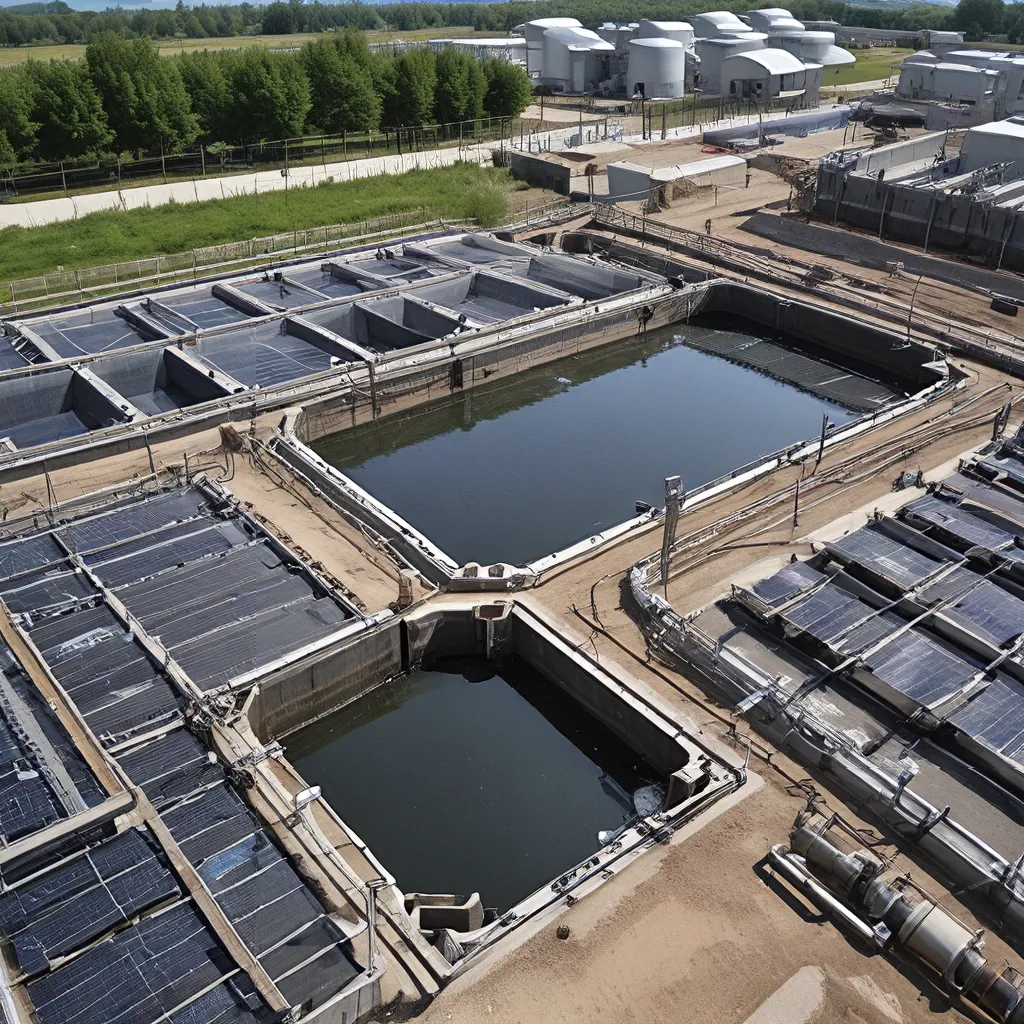
Ah, wastewater – that often-overlooked realm of urban infrastructure that most of us would rather not think about. But hold on, my friends, because this seemingly mundane topic is about to get a whole lot more exciting. You see, I’m here to tell you that wastewater is like a hidden treasure trove of renewable energy just waiting to be tapped into.
Turning Waste into Wealth: The Promise of Renewable Energy in Wastewater Treatment
Think about it – every day, millions of cubic meters of wastewater are generated worldwide, containing valuable organic matter, essential nutrients, and energy-rich compounds. It’s like a renewable energy buffet, just sitting there waiting to be devoured. And the best part? We can harness this untapped potential to power our wastewater treatment plants, reducing our reliance on costly and polluting fossil fuels.
Wastewater is no longer just a challenge to be managed – it’s a treasure trove of opportunity for savvy utility providers. By shifting our perspective from “waste management” to “resource valorization,” we can unlock a world of environmental and economic benefits.
Harnessing the Power of the Sun
One of the most exciting renewable energy sources for wastewater treatment plants is solar energy. Solar energy is gaining increasing attention in this sector due to its potential for sustainable development and environmental conservation. Think about it – the sun’s radiant light and heat can be harnessed and converted into usable forms of energy, all while reducing our carbon footprint and energy costs.
Photovoltaic systems, which use solar panels to convert sunlight directly into electricity, and solar thermal systems, which harness the sun’s heat energy, are two of the primary ways that wastewater treatment plants are tapping into the power of the sun. And the benefits are undeniable – reduced greenhouse gas emissions, improved energy efficiency, and resilient power supplies even during grid failures.
Case Studies: Solar-Powered Wastewater Treatment in Action
The potential for solar energy in wastewater treatment is already being realized in various case studies around the world. One case study achieved significant energy savings and reduced carbon emissions through a solar-powered wastewater treatment plant. Another highlighted the improved treatment efficiency and cost savings that can be achieved by integrating solar-powered aeration systems into existing facilities.
These success stories are just the tip of the iceberg, my friends. As photovoltaic and solar thermal technologies continue to advance, the opportunities for harnessing solar energy in wastewater treatment are only going to grow. And with supportive government policies and incentives, the future of this renewable energy revolution looks brighter than ever.
Turning Wastewater into a Renewable Energy Goldmine
But solar energy is just one piece of the puzzle. Wastewater contains a wealth of untapped resources beyond just the sun’s energy – it’s a veritable renewable energy goldmine.
One of the most promising processes for harnessing energy from wastewater is anaerobic digestion. This biological process, which occurs in an oxygen-deprived environment, allows a diverse consortium of microorganisms to break down the organic matter present in wastewater. The result? A biogas rich in methane, which can be captured and used to generate electricity or heat.
But the benefits of this approach go far beyond just energy production. Anaerobic digestion can also provide a low-cost, low-carbon way to warm homes, further reducing our reliance on traditional fossil fuels.
Unlocking the Full Potential of Wastewater
And the renewable energy potential of wastewater doesn’t stop there. Wastewater also contains valuable organic matter, essential nutrients, and energy-rich compounds that can be recovered and repurposed in a variety of ways.
For example, the nutrients in wastewater can be extracted and used as fertilizers, while the organic matter can be converted into biofuels or other valuable products. It’s a true circular economy in the making, where waste becomes a valuable resource.
Navigating the Challenges
Of course, harnessing renewable energy from wastewater is not without its challenges. The initial investment costs associated with installing solar energy systems or implementing anaerobic digestion can be significant, and weather variability and regulatory hurdles can also pose obstacles.
But I truly believe that the potential benefits far outweigh the challenges. Advancements in technology, supportive government policies, and the growing awareness of the importance of sustainable wastewater management are all converging to make renewable energy in wastewater treatment a reality.
The Future is Bright, and It’s Powered by Wastewater
So, my friends, the next time you flush the toilet or turn on the faucet, I want you to think about the hidden treasure trove of renewable energy that’s flowing through those pipes. Because the future of wastewater treatment is bright, and it’s powered by the very resource we’ve long taken for granted.
Alpha Wastewater is at the forefront of this renewable energy revolution, harnessing the power of the sun, the energy of anaerobic digestion, and the wealth of resources in wastewater to create a more sustainable and cost-effective future for our communities. So why not join us on this exciting journey? The possibilities are endless, and the rewards are boundless.